This simple persimmon jam recipe turns fresh persimmons into incredible jam in less than 60 minutes, with a flavor that’s like a honey-kissed apricot met a light mango-melon: super unique and absolutely delicious.

After years of teaching home cooks how to build flavor, I’ve learned that the best jams come from peak-season fruit and minimal interference from other ingredients. This persimmon jam is perfect for a cozy fall morning or festive winter brunch. Unlike recipes that require specialty equipment or scary canning processes, this one happens entirely on your stovetop, and it stores beautifully in the freezer, too.
If you’re ready to move past the same old grape or strawberry jams, persimmon jam is the seasonal preserve that’ll completely change your breakfast game. Use it on your fresh baked bread for a quick light breakfast, or add it as an ingredient in other recipes like jam-stuffed muffins, granola parfaits, or jam and cheese pastry cups to wow any guest (or for a fancy girl dinner in pjs). It’s bright, sweet, and totally impressive!
why this persimmon jam recipe works:
🚫 no pectin needed. The natural pectin in persimmons does all the work when you reduce and heat the mixture.
⚖️ customizable sweetness. You control the sugar level based on your preference and how sweet your persimmons are.
💰 budget-friendly. Specialty seasonal jams like this run $8+ for a tiny jar at farmers markets and specialty stores. Homemade = a fraction of the cost, especially when persimmons hit peak season and go on sale!
🧐 all about persimmons
There are many varieties of persimmons, but the main two commercially available include Fuyu and Hachiya varieties. They have a light, sweet, and mellow flavor. It’s similar to honey, apricots, mango, and melon. Fuyu persimmons are flat, squat, and firm in texture even when ripe. Hachiya persimmons are shaped like an oval or acorn, and they’re best when they are soft and squishy.
They’re available from October – December (sometimes into January) in grocery stores and specialty food stores near the other fresh fruits. The best persimmons usually show up between November and early December.
🛒 ingredients
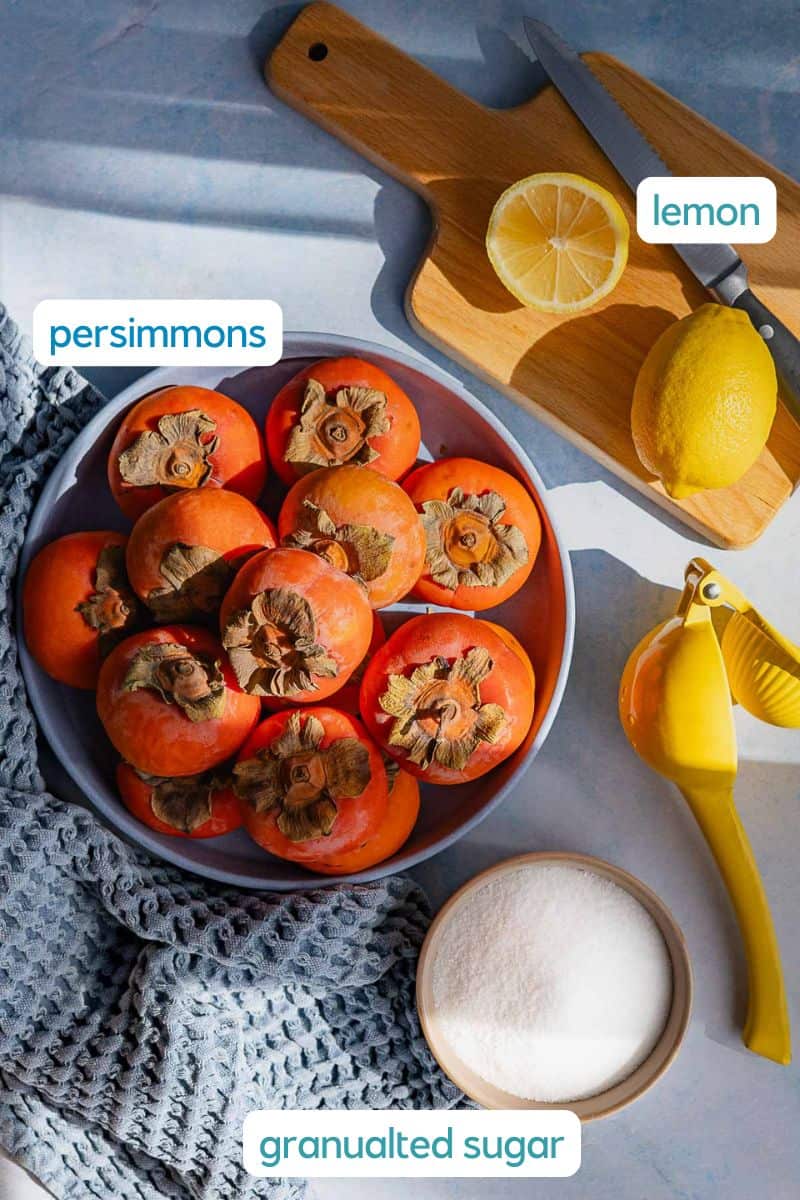
See the recipe card for the exact quantities.
top flavor tip:
Buy your persimmons when they’re on sale during peak season (late September through December, with October and November being prime time). In my years of cooking with seasonal ingredients, I’ve learned that fruit on sale = fruit in season, and that’s when you’ll get the best flavor and value.
🍳 how to make persimmon jam

1: Wash your persimmons and roughly chop them.
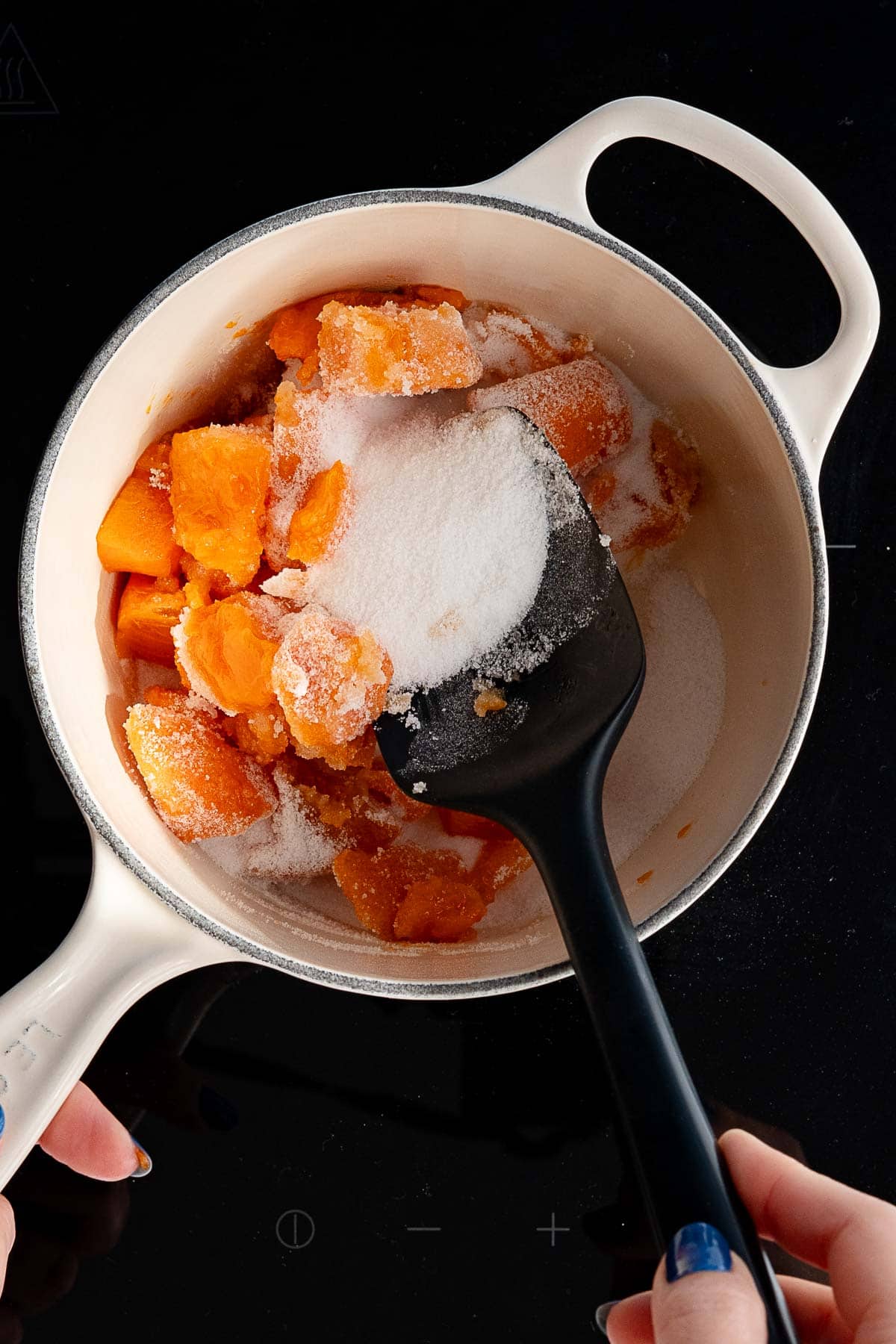
2: Combine persimmons and sugar in a pot on the stovetop.
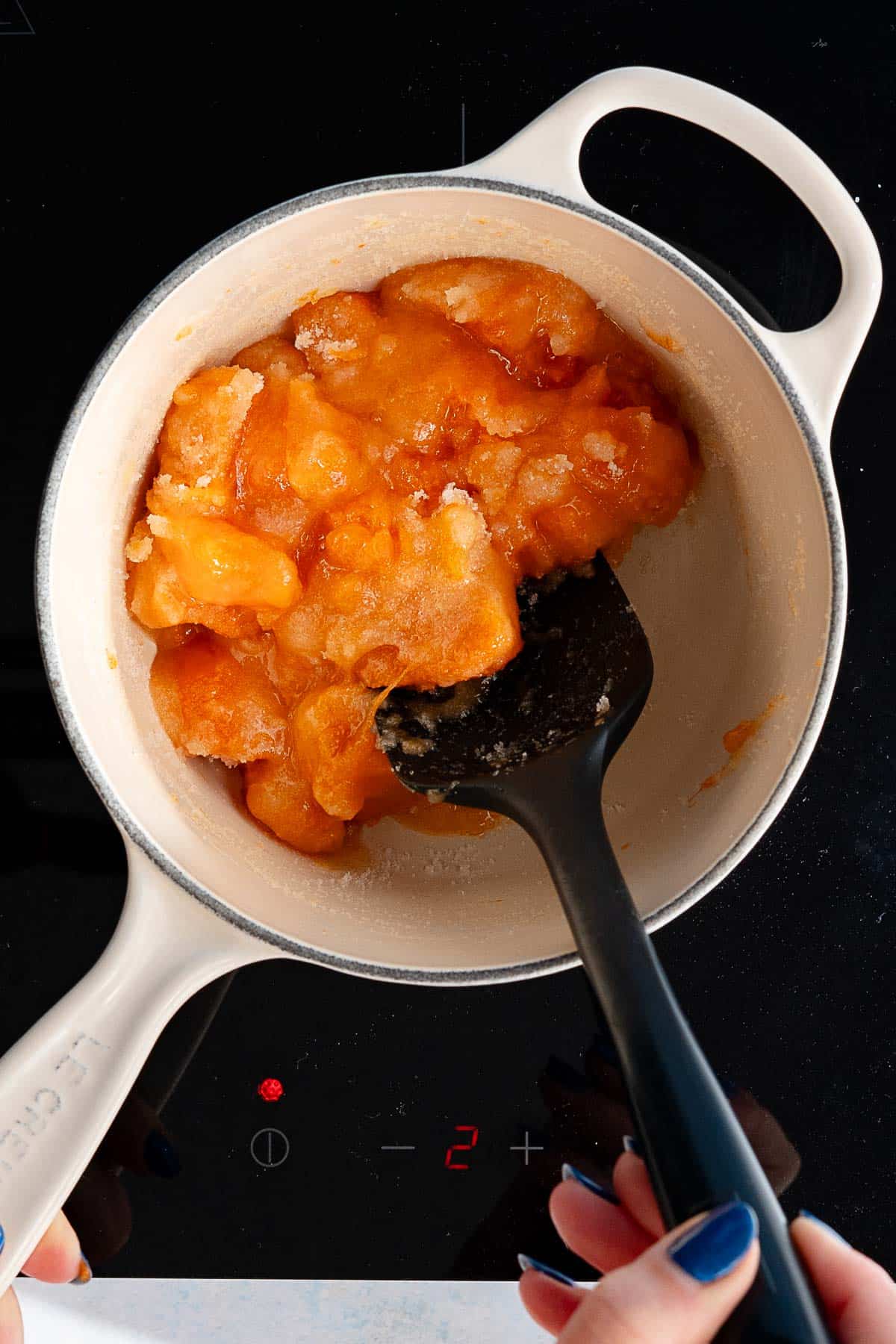
3: Heat and reduce the mixture, stirring occasionally, until it thickens to your desired consistency.

4: Add lemon juice and lemon zest.

5: For chunky jam, gently mash persimmons with a potato masher or the back of a spoon. For smoother consistency, pulse with an immersion blender for about 30 seconds until you see the texture you like.
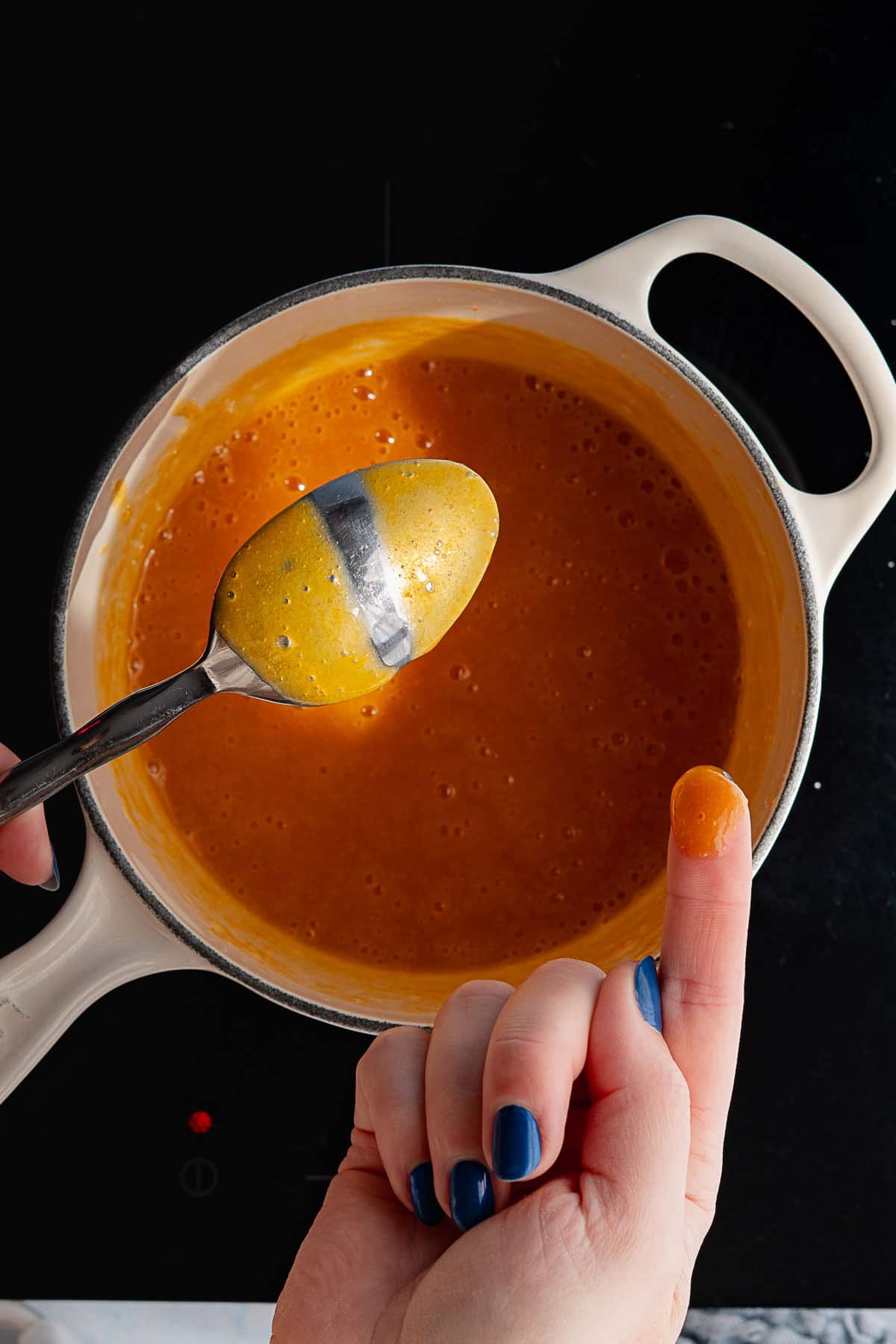
6: Continue cooking until the jam reaches your preferred thickness.

7: Remove from heat and let cool slightly.
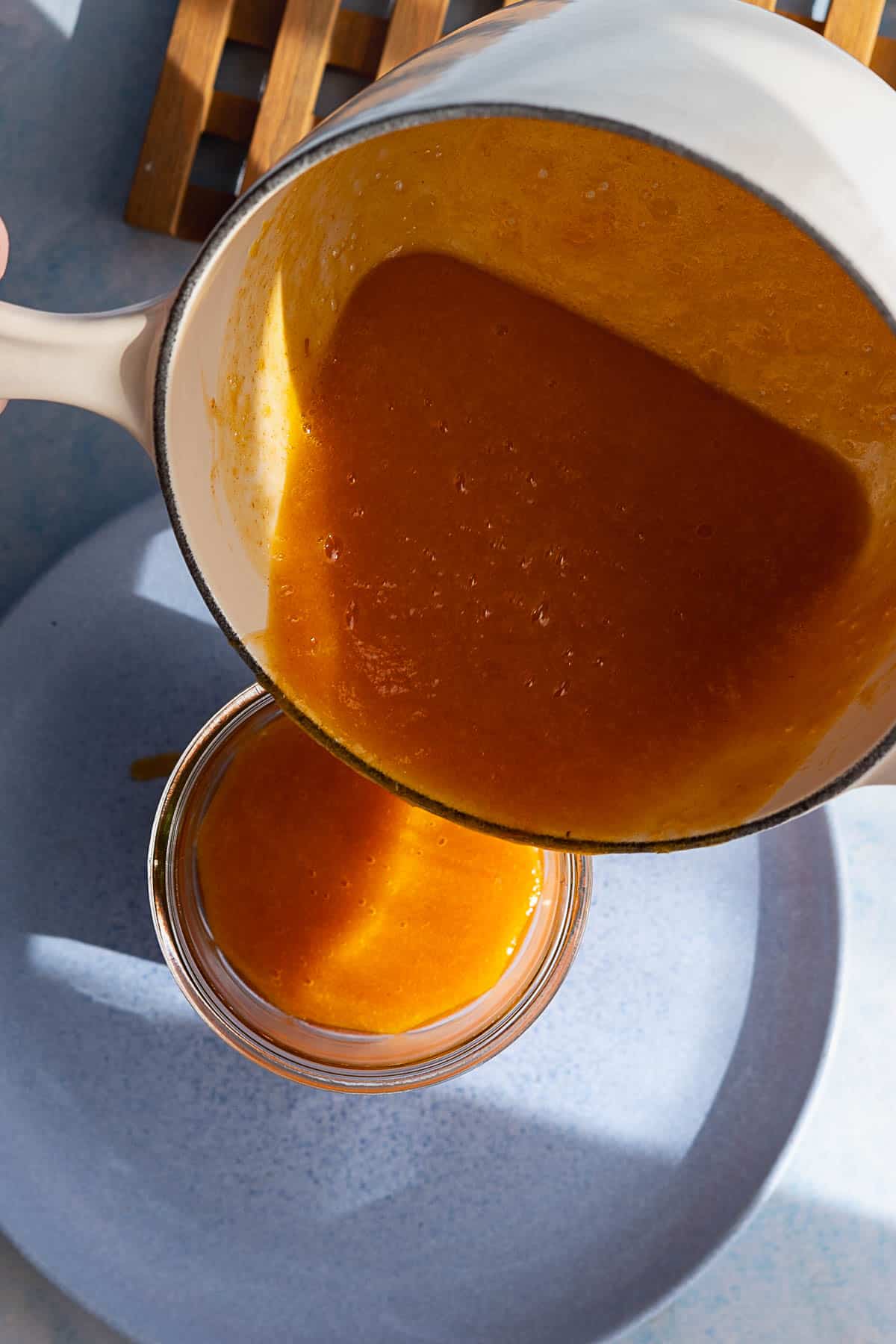
8: Transfer to jars for storage.
Wanna save this recipe for later? 📬
💡tips & tricks for getting it right
🍽️ how to serve your homemade jam
- breakfast classics– spread on a freshly baked baguette for a slow morning to yourself, or swirl spoonfuls into Greek yogurt parfaits for an elegant brunch.
- happy hour – add a few spoonfuls into your cocktail shaker to add seasonal flavor to happy hour cocktails and mocktails.
- in other recipes – use this jam in other recipes like jam stuffed muffins or appetizers like baked puff pastry cups! It pairs beautifully with brie cheese and goat cheese, too, and makes a wonderful addition to any cheese board!
- foodie gifts – package in cute jars as holiday hostess gifts!
ℹ️ troubleshooting tips
- too thin or runny – this jam is thinner than shelf-stable store-bought jams, but if it’s TOO thin, you have a few options for thickening it up! Continue cooking the jam longer to allow more liquid to evaporate. The jam will thicken as it cools, but if it’s still too thin after cooling, return it to the heat and simmer for another 10-15 minutes.
- too thick – add a tablespoon of water at a time while reheating gently until you reach your desired consistency.
- bitter or astringent taste – if your persimmons aren’t fully ripe, your jam could taste bitter. Always taste your fruit before cooking. If you accidentally used under-ripe persimmons, add more sugar to balance the bitterness.
♻️ customize your persimmon jam
- swap the variety – you can use Hachiya or another variety instead of Fuyu, but make sure they’re fully ripe. Taste your fruit before using to avoid that astringent, mouth-puckeringly bitter flavor. 😝
- add spices – add vanilla, cinnamon, or all-spice to your jam as its simmering for a flavorful spiced persimmon jam! When in doubt, classic pie spices work!
- texture – make it chunky by hand-mashing, or smooth by blending. You can also use persimmon pulp to make this, too! Your jam, your rules!
- sugar amount + type – adjust based on your sweetness preference and how sweet your persimmons are. The secret to incredible flavor here is balancing the natural fruit sweetness with just enough sugar to preserve and enhance the taste. You can also use a less refined sugar like demerara or turbinado sugar. Keep in mind, swapping the sugar you use will deepen the flavor and add a darker color, too.
🫙 how to store persimmon jam
Store persimmon jam in sealed jars in the refrigerator for up to 2 weeks, or freeze for longer-term storage (up to 6 months).
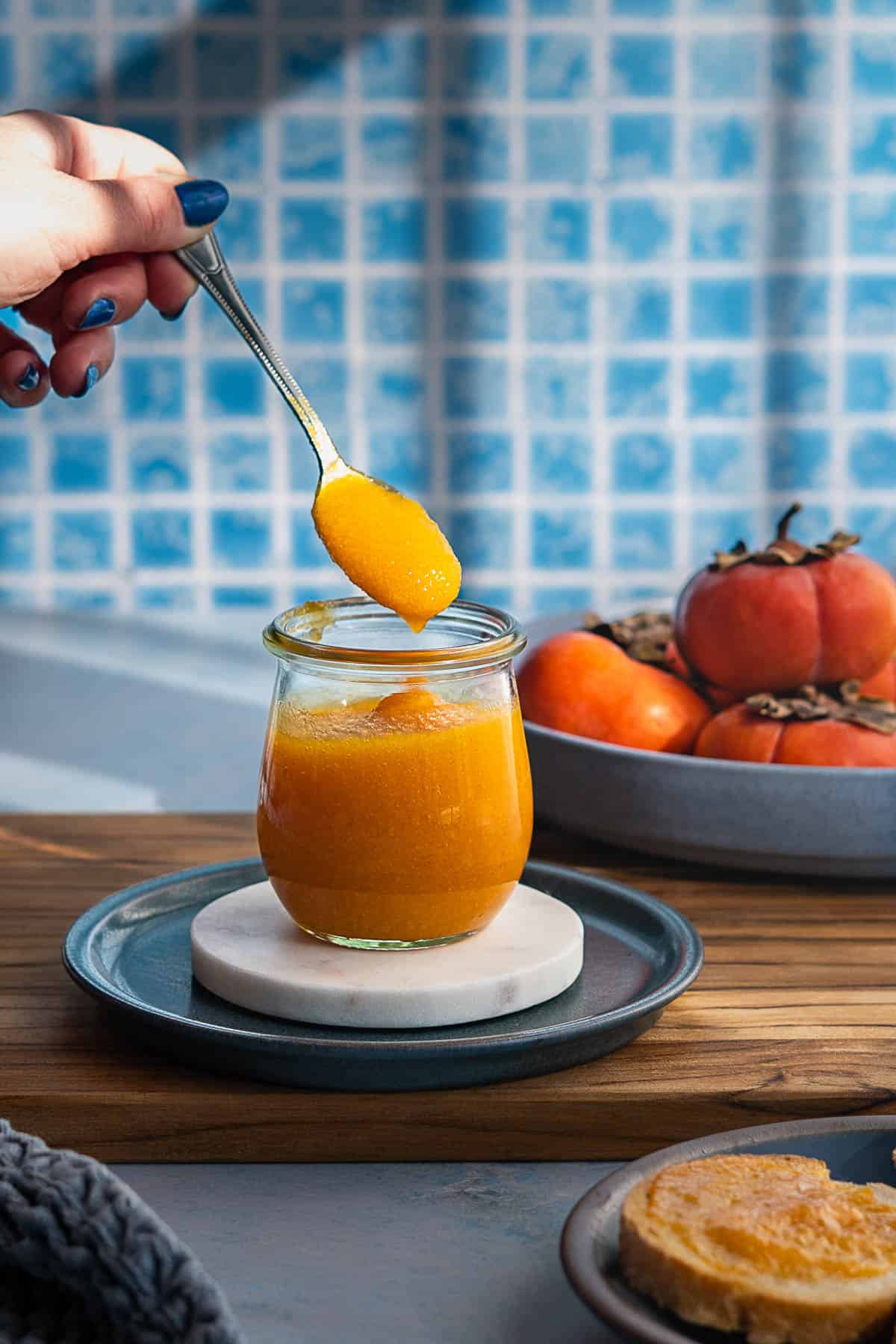
💬 q+a
Do I need to peel persimmons?
The skin is edible so you can wash them well and chop them up, skin and all. It can add a grainy texture to the purée, so if you’re going to blend it, I recommend peeling. Otherwise you can leave the skin on if you like a chunkier jam!
Can I reduce the sugar?
Yes! Start with less sugar and taste as you go. Keep in mind that sugar helps preserve the jam, so if you reduce it significantly, plan to freeze your jam or use it within a week.
How do I know when the jam is done?
Place a small spoonful on a cold plate and let it sit for a minute. Run your finger through it – if it wrinkles and doesn’t run back together immediately, it’s ready.

Homemade Persimmon Jam (No-Pectin Persimmon Preserves)
Wanna save this recipe for later? 📬
Equipment
- 1 kitchen scale or measuring cups
- 1 medium saucepan
- 1 immersion blender optional, for smoother consistency jam
- 1 spoon or spatula
- 1 storage jar
Ingredients
- 340 g persimmons Fuyu variety, peeled and chopped (from 5 medium sized persimmons)
- 140 g granulated sugar 2/3 cup
- 2 g lemon zest 1 tsp
- 44 g lemon juice 1.5 ounces, from one lemon
Instructions
- Prep persimmons. Wash, peel, and chop your persimmons into large chunks.
- Add sugar to fruit. Combine sugar and persimmons in your saucepan. Stir well to coat all persimmon chunks in sugar.
- Heat + cook down. Simmer over medium heat for 15 – 30 minutes.
- Add lemon. Add lemon zest and juice.
- Smush or purée. As the persimmons cook down, use a potato masher or your spatula to smush the pieces. For a smoother consistency jam, use an immersion blender to puree the persimmons.
- Taste + adjust. Make sure you like the sweetness and flavor of your jam, adjusting as needed with more sugar. Check for the right consistency by getting a spoonful and allowing it to cool slightly, or running your finger through the jam coated on the back of a spoon.
- Cool. Once you like the flavor and consistency of your jam, allow it to cool completely.
- Store. Store your finished jam in an airtight jar in the fridge.
Notes
ℹ️ troubleshooting tips
-
- too thin or runny – this jam is thinner than shelf-stable store-bought jams, but if it’s TOO thin, you have a few options for thickening it up! Continue cooking the jam longer to allow more liquid to evaporate. The jam will thicken as it cools, but if it’s still too thin after cooling, return it to the heat and simmer for another 10-15 minutes.
-
- too thick – add a tablespoon of water at a time while reheating gently until you reach your desired consistency.
-
- bitter or astringent taste – if your persimmons aren’t fully ripe, your jam could taste bitter. Always taste your fruit before cooking. If you accidentally used under-ripe persimmons, add more sugar to balance the bitterness.







